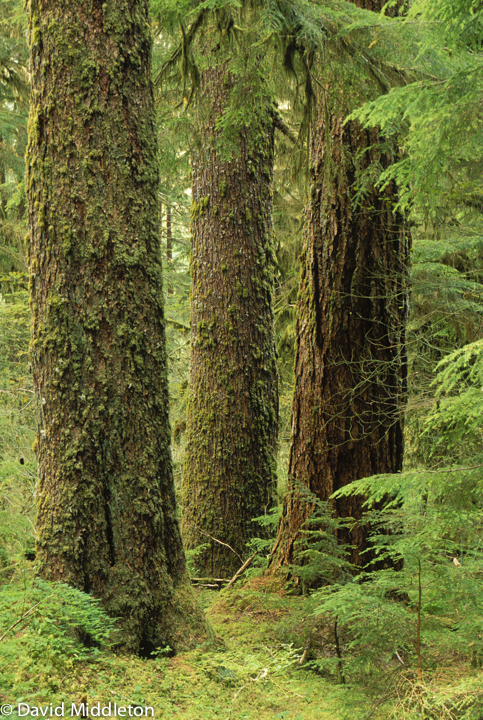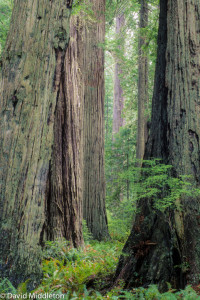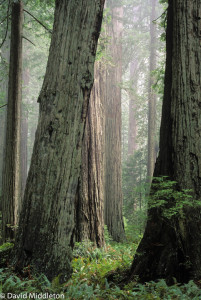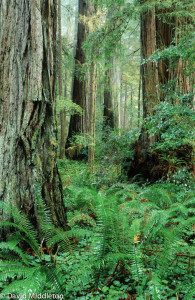 Forests are some of the hardest environments to photograph in, at least they are for me. I doubt anyone has taken more pictures in forests over the last 30 years but still I find it an extremely challenging place to find a good image.
Forests are some of the hardest environments to photograph in, at least they are for me. I doubt anyone has taken more pictures in forests over the last 30 years but still I find it an extremely challenging place to find a good image.
The problem is that there is just so much stuff going on visually it seems almost impossible to make any sense of it so compositions are typically messy and overly complicated.
My strategy for dealing with this chaos is to simplify what I see through my camera as much as possible. I do this by controlling compositionally the two vertical sides of my photo with trees, specifically, tree trunks. In other words, I frame up my shot so that there are tree trunks on either side of my picture. This ‘controls’ the visual chaos on two of the sides of my composition.
I don’t pick just any two trees though. I pick a pair that are different distances from me- the trunk on the left side, let’s say, is closest to me and the one on the right side is, say, twice as far away. This arrangement creates a diagonal ‘entrance’ into my composition between the two trees- a composition I find very inviting.
This technique is much easier the bigger the trees are- you have to have enough of the trunk to make it look planned. With small trees there just isn’t enough trunk so your composition looks more like a mistake than like a clever composition.
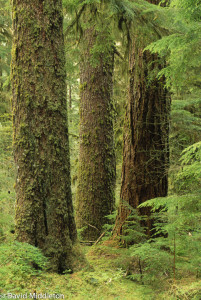 You don’t always have to use this compositional technique. There are times in a forest when the elements of the composition are already pretty simple so a simple straight composition works just fine. But still, the bigger the trees the easier it is to find a strong composition.
You don’t always have to use this compositional technique. There are times in a forest when the elements of the composition are already pretty simple so a simple straight composition works just fine. But still, the bigger the trees the easier it is to find a strong composition.
My favorite lens for photographing in a forest is somewhere in the 50-80mm range. A wide angle lens by its very nature includes so much stuff that the composition becomes cluttered and haphazard. A longer telephoto is just the opposite- it doesn’t include enough of the forest. It is great for forest details- backlit limb, colorful branch- but not so good for a shot of what the forest is like.
The other secret to good forest photography is realizing that not all sections of a forest are equally pretty and photographable. Every forest I have ever been in has parts of it that are so visually chaotic that it would be impossible to pull a nice shot out of the mess. You have to wander around to find the less visually messy parts of the forest and then linger there for your photography.

